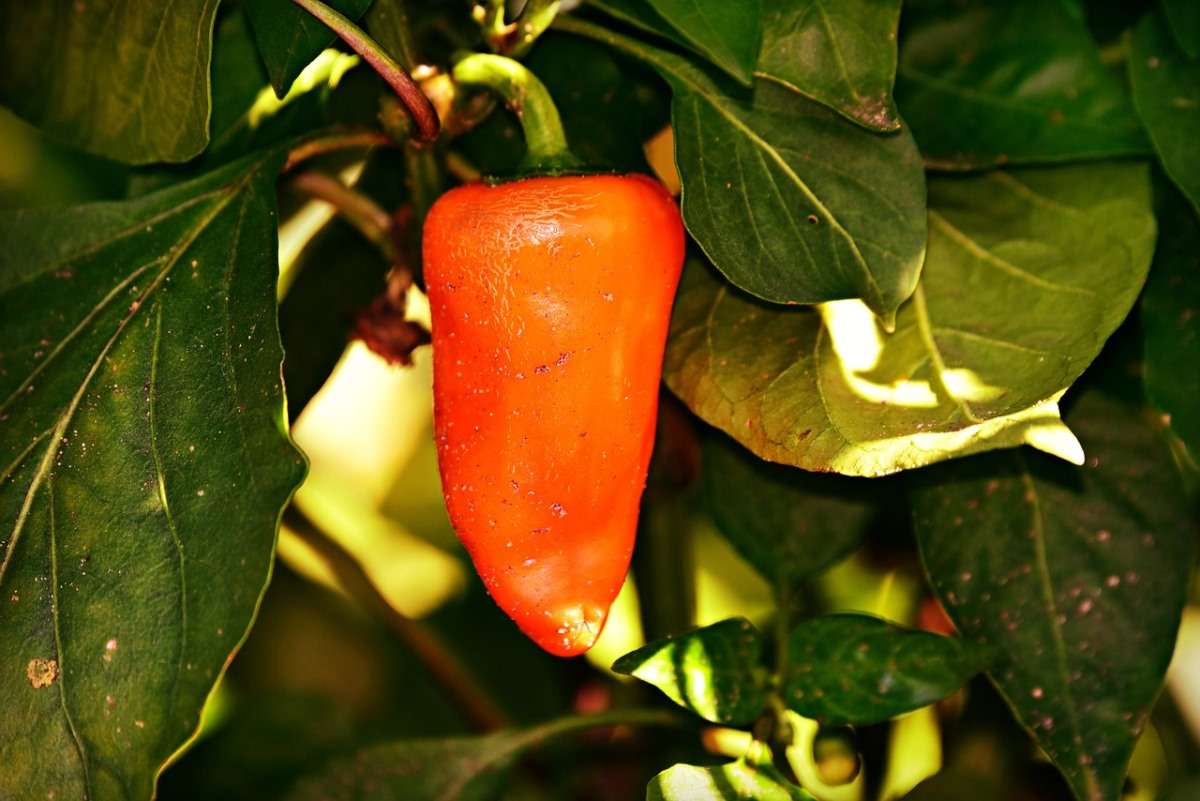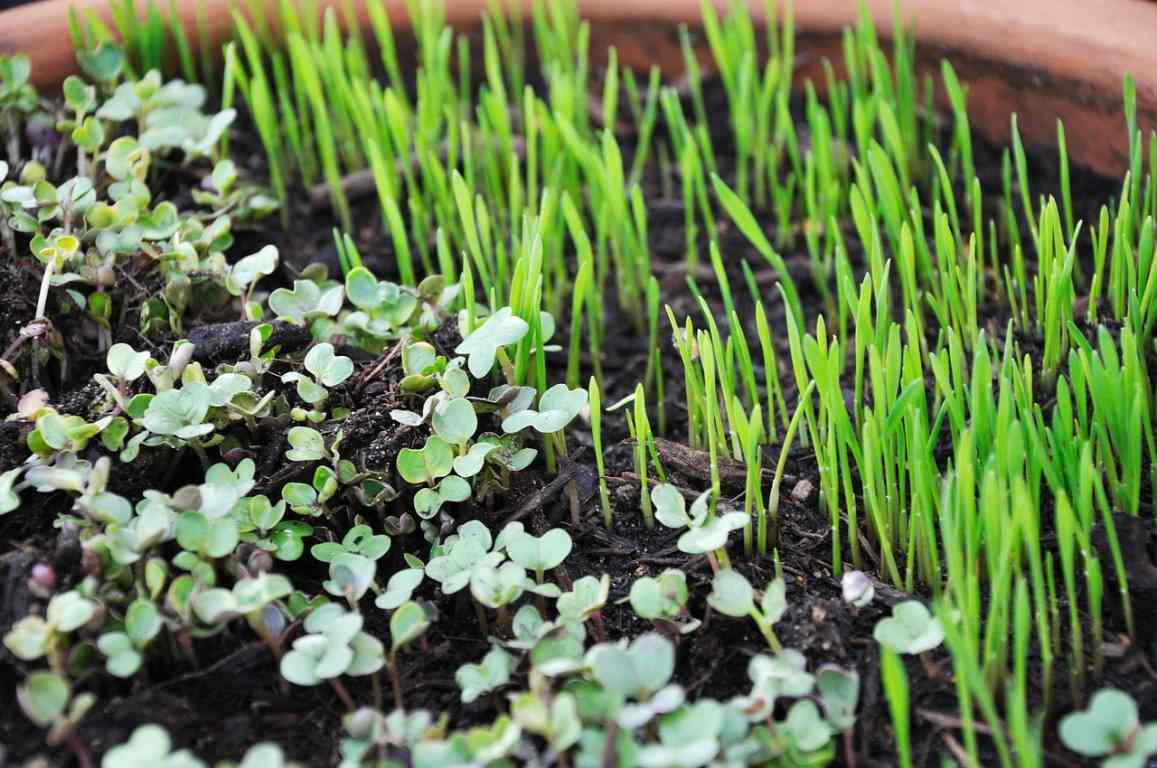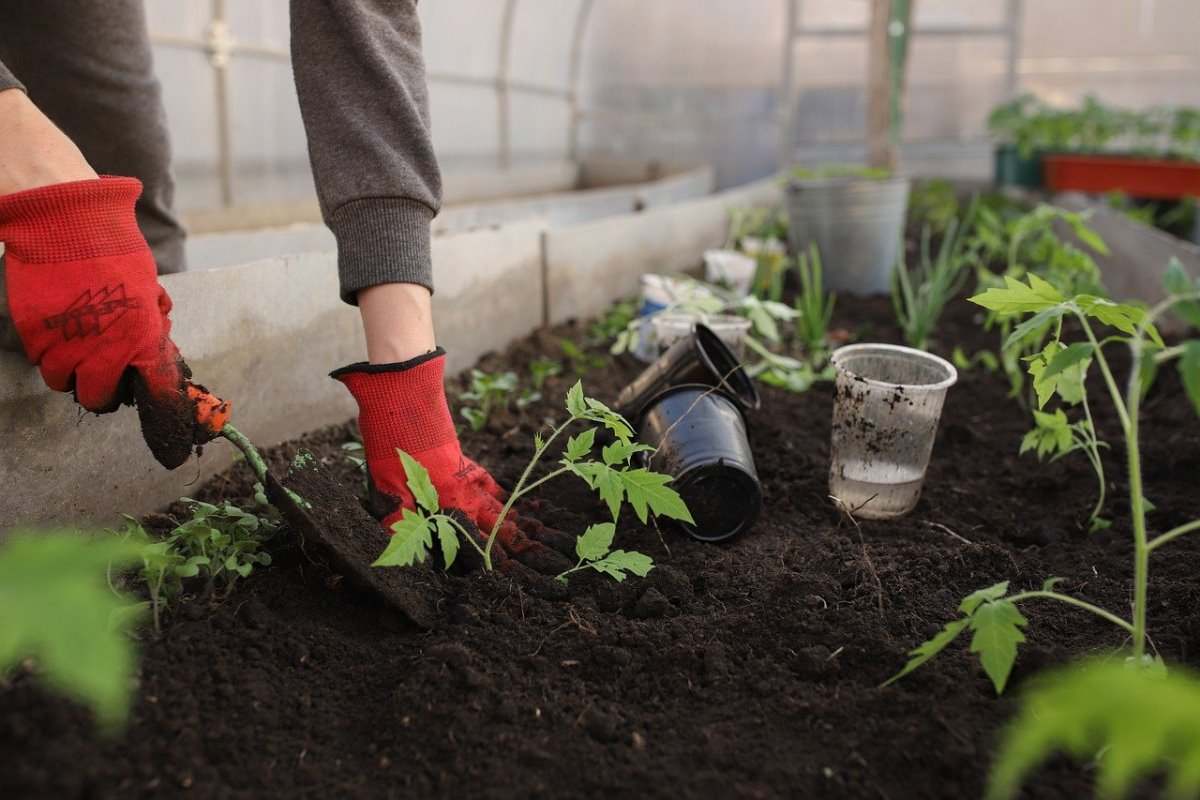Introduction to Easy Vegetables to Grow Indoors and planting guide: Hello everyone, we are back with an interesting topic today. Do you want to grow vegetables indoors and do you want to know their requirements? Well, then you will need to follow this complete article.
Vegetables are plant portions that are utilized as food by humans and other animals. A plant’s developed ovary is called a fruit. So, while tomato is technically a fruit, it is often referred to as a vegetable. Fruits include squash, peppers, and eggplants, according to this classification. There are other seeds, such as peas, that are classified as vegetables.
A Guide to Easy Vegetables to Grow Indoors, Indoor Vegetable Planting Guide
You’ll need a pot with drainage holes and specially formulated indoor potting soil to get started. While certain vegetables can be grown in small containers, larger vegetables will require larger and deeper containers to allow their roots to flourish. And, to guarantee that your soil drains properly (no damp pots allowed); you may make your own mix by mixing organic perlite into high-quality potting soil.
Once you’ve gathered your materials, find a sunny window (veggies require at least 4 to 6 hours of sunlight) and start potting.
Each plant will require various amounts of water, but it’s always a good idea to remember the old adage: less is more. And here’s a brilliant suggestion: Install a cool-mist humidifier near your indoor garden to help them feel more like they’re outside and to keep them from drying out.
Invest in powerful grow lights to give your plants an extra boost, especially during those bleak winter days. You can still expect to see sprouting without grow lights, but it will take from weeks to months before you can cut and enjoy your bounty.
List of 8 Best and Easy Vegetables to Grow Indoors
Choose plants that thrive indoors to make your life easier. Indoors, some veggies have proven to be successful:
1. Carrots
Carrots don’t require much space around them, but they do necessitate deeper soil than other vegetables. They’re cool-weather vegetables that grow at temperatures nearly about 15°C.
2. Green Onions/Scallions
Green onions thrive indoors since they’re low-maintenance and don’t require as much light as other vegetables. You can either start with seeds or just replant the root end of the green onions when you’ve finished with the tops.
3. Hot Peppers
In case if you miss this: How To Grow Onions In Greenhouse.

Pepper plants are tropical perennials, which means they can thrive in hot climates and direct sunlight. However, because they are self-pollinating, they can thrive indoors. They require 14 to 20 hours of sunshine every day and grow at a temperature of around 21°C. Allow the soil to dry out between watering then put them in a container that is at least eight inches tall.
4. Leafy Salad Greens
Cool-tolerant leafy salad greens like Spinach, Kale, and Arugula are among the most dependable of the lot. In small places, they can grow in as little as four weeks. They require approximately 12 hours of sunlight every day and thrive at temperatures of around 15°C.
5. Microgreens

Don’t be fooled by their little size; microgreens have 40 times the amount of vitamins and nutrients as fully developed plants. You’ll need to plant them like leafy salad greens, but you’ll only harvest them when they’re around 2 to 3 weeks old. For a healthy crunch, try adding them to sandwiches.
6. Potatoes
Potatoes (both sweet and ordinary) can be grown in soil from scraps, which may surprise you. Begin by cutting up a sprouted potato into slices and placing them down sprout-side-up on at least four inches of soil. Add another four inches of soil on top, and you’ll have potatoes in approximately two months. Make sure you have a large enough pot because these potatoes may grow pretty large, and you may need to keep adding dirt as they grow to keep the potatoes covered.
7. Radishes
Radishes grow quickly, taking nearly about 30 to 40 days from seed to harvest. They won’t require as much light as other vegetables, but make sure they aren’t overcrowded to allow their bulbs to flourish.
8. Tomatoes
In case if you miss this: How To Grow Roses In Greenhouse.

Tomatoes are a summer plant, but that doesn’t mean they can’t be grown indoors. They’ll require a lot of light, 14 to 20 hours per day. They self-pollinate like peppers, but you can shake them to help the pollen fall from blossom to flower. Smaller types thrive in pots, and you’ll notice that the seeds germinate swiftly.
Growing Vegetables Indoors and There Are 3 Simple Steps for Beginners
Step 1: Selecting the best indoor-growing vegetables
While you may want to try out different plants, keep in mind that certain vegetables grow quickly indoors while others require a little more time before harvesting.
Vegetables such as leafy greens can be grown indoors in a shorter amount of time (usually 4 to 6 weeks). Arugula, Kale, Lettuce, Broccoli, and Spinach, as well as sprouts like Carrots, Beets, and Brussels sprouts, are among them. These are also easy to plant and do well in small settings. They also prefer to grow in cool areas with moderate light. Others, such as tomatoes and cucumbers, take longer to grow and require more area.
Step 2: Obtaining the best indoor vegetable growing supplies
The supplies you’ll need to produce veggies indoors are listed below:
- Indoor Vegetable Gardening Lights
Photosynthesis is a crucial part of any plant’s growth process that necessitates the presence of light.
Your vegetables will grow thin with little leaves and fail to flower or fruit if they don’t get enough light.
- Indoor Vegetable Growing Containers
The recommended pots should be deep enough for the roots to grow comfortably. They should also include drainage holes because wet water might harm the roots of the plant.
The size of the container you’ll need is determined by the vegetable you’ll be growing.
It’s never easy to choose which container to buy because there are so many possibilities available online. So, choose the best and suitable one for your particular vegetable plant.
- Choose the best planting medium for indoor vegetable growing
Indoor veggies require a growing medium that can drain effectively and remain loose while still keeping moisture and nutrients. Outside soil may include weed seeds or pests, making it an unsuitable substrate.
If you’re starting from scratch, obtain a basic seed starting mix and then transfer the plant to an organic potting mix from a local store. Choose the best types of soil for growing veggies indoors for better results.
- Indoors, encourage air circulation for your growing vegetables
To aid pollination, your plants will require sufficient air circulation while growing vegetables inside. Mould, bugs, and even fungus growth are all prevented by air circulation. You can help with this by using an electric fan set on a timer to operate for a few hours at a time during the day.
- Allowing indoor vegetable growing to thrive with the best humidity
Plants require the correct level of humidity to grow, which can be difficult to get indoors, especially if you use a heater. Plants that are wilted, losing their leaves, or turning brown on the tips are suffering from a lack of humidity.
To boost humidity, fill a tray with lava rocks and water near the plant, spritz them daily, use a humidifier, or move them closer together.
- Indoor vegetable gardening: The best fertilizers
When compared to their outside counterparts, indoor plants absorb nutrients quickly. Fertilizer will be essential to give your vegetables a boost. Make sure you’re using the proper amount and doing it at the right time by following the directions on the package.
Step 3: Educate yourself on how to properly care for your indoor vegetables
If you’re growing veggies indoors, then they will need to be well-cared for if you want them to thrive and produce the outcomes you want.
You need to make it a daily routine to check them to ensure they have everything they need. The soil should be kept moist and if the earth seems dry, then water the plants.
Make sure you don’t overwater them to keep the roots away from decay. Check to see if the lights and even fans are working properly. If you’re reliant on sunlight, then adjust the distance between the plant and the light source based on how it’s performing.
Common Problems with Indoor Growing Vegetables
- Inadequate light
While leafy greens, herbs, and some root vegetables may grow and yield well in a bright southern window, lack of sunshine is one of the most common indoor vegetable difficulties.
Solution: Use artificial light to supplement natural sunlight for a minimum of 10 to 12 hours per day.
- Temperature
Although most houses are kept at a pretty stable temperature, fruiting and vining summer vegetables produce the most fruit when exposed to temperatures of roughly 27°C during the day and 18°C at night.
Solution: Grow tomatoes, peppers, and cucumbers in a separate temperature-controlled room or a compact greenhouse to address temperature difficulties when growing vegetables inside the house.
- Humidity
Due to the drying effect of air conditioners and furnaces, one of the most common indoor food concerns is a lack of humidity. Plant growth is slowed by low humidity, which makes it difficult for your vegetables to absorb water from the soil.
Solution: Mist the leaves with a sprayer or use a humidifier daily.
- Pollination
One of the most common indoor vegetable concerns that gardeners face is the failure to produce fruit. Fruiting plants will produce few if any, plants without insects transporting pollen to various blooms or wind distributing pollen to self-fertilizing plants.
Solution: To help disperse pollen, you need to use a fan or gently shake self-pollinating plants. Hand pollination is used to fertilize flowers for species that are regularly pollinated by insects.
- Diseases and pests
Bacteria, fungus, viruses, and even pests can cause difficulties with indoor edibles, just as they might with outdoor plants. When gardening indoors, aphids and whiteflies can be extremely difficult.
Solution: Inspect plants regularly and cure any infestations or disease outbreaks as soon as possible.
- Overwhelmed or submerged
Another indoor vegetable issue to consider is too little or too much water. This stresses the plants, causing them to produce fewer leaves and drop their fruit.
Solution: Check for sufficient drainage in pots, wait until the top layer of soil is dry to the touch before watering, or use an app to remind you to water.
- Incorrect fertilizer application
Using too much, too little, or the wrong sort of fertilizer can stymie growth and fruit production in indoor vegetables.
Solution: Find out what kind of fertilizer is best for each plant species. Feed plants just as needed, and mix fertilizer according to the manufacturer’s directions.
- Overcrowding
Another often overlooked disadvantage of growing vegetables indoors is the lack of living space. Plants crammed throughout the house may come into contact with pets, toddlers, or an aggressive cleaning lady. Harvests are delayed due to overturned pots and shattered plants.
Solution: Better use a spare room, section of the basement, or even an attic for your indoor garden.
- Broccoli Seed Germination and Selection
- Asparagus Seed Germination and Variety Selection
- Seasonal Flower Gardening: Best Practices for Spring, Summer, Fall, and Winter
- How to Grow Hibiscus from Flower
- Plantation Ideas for Home Decoration: A Beginners Guide
- Flower Garden Designs and Layouts for Beginners
- Planting and Spacing Techniques in Papaya: A Beginner’s Guide
- Growing Gold: Essential Techniques for Planting Pineapples
- How to Make Kalanchoe Plant Bushy: Home Remedies and Solutions
- 11 Reasons Why Your Gardenia is Not Blooming: Home Remedies and Solutions
- Eco Elegance: The Guide to Designing a Drought-Tolerant Landscape
- Gardening on a Slope: Strategies for Hillside Landscaping
- Nourish and Flourish: Top Organic Mulches for Thriving House Plants
- Everything You Want to Know about Indian Mogra Flower: Discover Uses and Growing
- Green Thumb Success: Expert Tips for Cultivating Greenhouse Pumpkins All Year Round
- Maximize Growth & Flavor: The Ultimate Guide to Companion Planting in Herb Gardens
- How to Control Rhododendron Problems Naturally: Home Remedies and Organic Ways to Fix Them
- Natural Magic: The Remarkable Benefits of Cinnamon for Plants
- Best Steps to Revive Dying Tulip with Natural and Organic Treatment
- 10 Reasons Why Your Angel Trumpet is Not Blooming: Remedies and Treatment
- How to Fix Periwinkle Leaf and Flower-Related Problems: Natural Remedies and Solutions
- How to Fix Zinnias Leaf and Flower Problems: Discover Natural and Home Remedies
- Organic Steps to Induce Lemon Tree Flowers: A Comprehensive Guide
- Bloom Booster: Crafting the Perfect Homemade Bougainvillea Fertilizer
- Optimizing Growth: A Guide to Applying NPK Fertilizer for Potted Plants
- 10 Best Homemade Fertilizers for Rubber Plant: DIY Recipes and Application Method
- How to Boost Female Pumpkin Flowers: Effective Steps for More Flowers and High Yields
- Transform Your Indoor Garden: Top Benefits of Pink Salt for Houseplants
- 10 Best Homemade Fertilizers for Peacock Plants (Calathea): Easy DIY Guide
- Unlock Blooms: 9 Reasons Why Your Potted Chrysanthemum is Not Blooming
- 8 Reasons Why Your Potted Hibiscus is Not Blooming: Fix it with Simple Solutions
- Unlock Blooms: 9 Key Reasons Your Potted Frangipani Won’t Flower
- 10 Reasons Why Is My Ice Plant Not Blooming: Remedies and Treatment